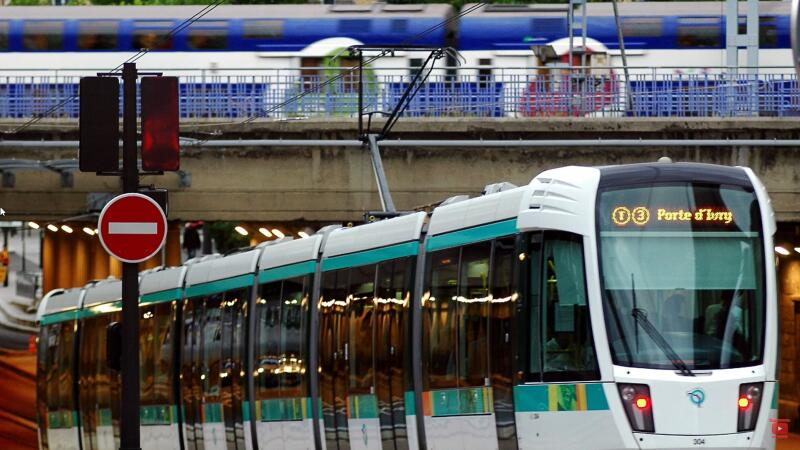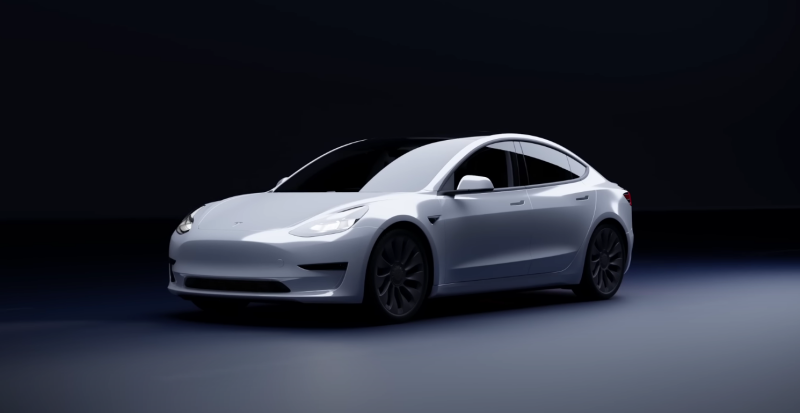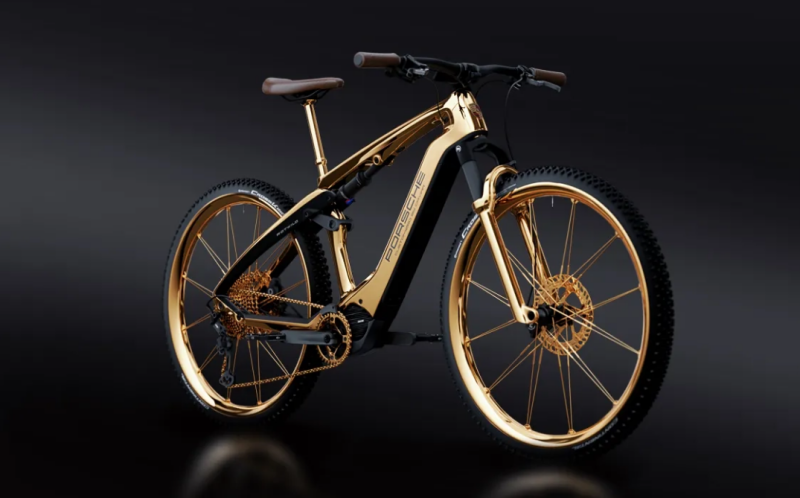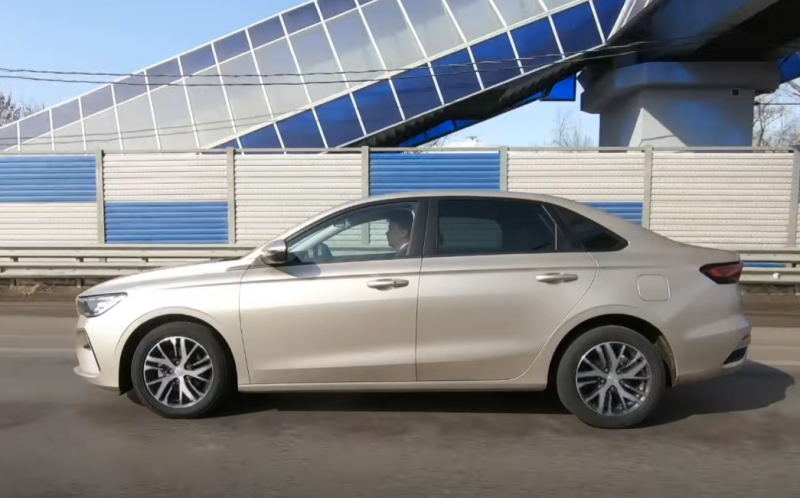In order to remedy the situation, there is navigation and a good transport interchange. And the last thing in the main French city is set very seriously and with a great degree of convenience for the guests of the capital. In order for all this to serve you, you just need to familiarize yourself in detail with the types and timetables of the Parisian public transport. Today we will try to slightly open the veil of this issue.
 Parisian public transport has several types at once. Photo: youtube.com
Parisian public transport has several types at once. Photo: youtube.comEach of them will be highlighted in a separate topic. Let's also pay attention to what type of urban transport is the most optimal for tourists who decide to get a better look at one of the most beautiful cities in the world. We hope that the information will be interesting for those who do not plan to walk along the Champs Elysees in the near future, but simply read "for the general development."
Metro is the hallmark of any metropolis
Any major capital or just a city with a population of more than a million cannot do without an extensive metro network. This convenient underground transport helps each of them not to suffocate from the glut of city streets, traffic jams and smog. Of course, Paris is no exception. Moreover, the Paris metro is one of the busiest and most extensive in the world.
The metro is the easiest, fastest and most economical way to get around the heart of France. The network consists of 16 lines and has almost 300 stations. The entrance to each of them is marked with a large yellow letter "M".
This is a little different from the Moscow or Kharkov metro, the entrance to which, according to Soviet tradition, was indicated by a huge red letter. The same color was also used in the Czech capital. True, the letter itself is very beautifully stylized. But I would give preference not to beauty, but to practicality. And here the big red “M” is visible from afar, which is very convenient for out-of-town or foreign guests. I think the yellow color here also does not look so bright. Well, the French, as they say, know better.
The metro service starts every day, including holidays, at around 6 am and ends at about 00:45 (Sunday to Thursday) or 1:45 (Friday and Saturday). As in any other city in the world, the smallest interval of the subway movement falls on peak hours: the subway runs every 2 minutes.
The general frequency of movement depends on the time and day: at other hours, especially in the early morning and around midnight, the distance between the trains is several times greater.
Of course, the most important question is: where to buy a metro ticket? They are available for purchase at several places convenient for passengers:
✅ ticket machines located at the stations
✅ tobacco shops
✅ online, on the website PARISINFO.COM
A single ticket costs 1,90 euros. If you are planning a number of trips in the near future, then it is better to take advantage of the opportunity to purchase a wholesale package. This way you can save some money (€18,60 for a booklet of 10).
 So you can pay for travel in the Paris metro. Photo: youtube.com
So you can pay for travel in the Paris metro. Photo: youtube.comOne way or another, it is always important to remember that the main advantage of the subway is speed and convenience. I would also add that those who are familiar with at least one metro of a city in any part of the world have a noticeable advantage over others. The informative structure in the subways of different cities of the world is very similar: ubiquitous signs with the names of stops, sound announcements of their names and transfer stations to other lines. The only difference is the language in which it is done and the number of lines.
There are a lot of them in Paris (in principle, there are about the same in Moscow), so if you used the metro in smaller cities and are used to transferring to three or four lines, you will experience a little discomfort. The presence of crossovers can be intimidating at first, but you quickly get used to it. If, as I noted above, in the subway you have long been "like a fish in water."
Of course, among the positive aspects of this type of transport, there is a huge minus. From the underground tunnel it is simply impossible to see all the bewitching beauty of the most elegant city in Europe. So we use the metro only for fast travel on business, and for tourist routes we will find something better.
Tram - ground, but not very convenient
Until the middle of the 20th century, Paris could boast of an extensive tram network. Its history has been going on since the end of the last century. But, as Leonid Osipovich Utyosov sang: “the metro, flashing with oak railings ...”, he took all the passengers to himself. In the 50s, underground lines won the competition and began to replace trams. Over time, the latter disappeared altogether. The historic farewell ride of the Paris tram took place in 1957. He rode to Versailles in order to become a museum exhibit for many decades.
 A tram that returned to Paris several decades later. Photo: youtube.com
A tram that returned to Paris several decades later. Photo: youtube.comHowever, the history of land rail transport in the French capital is too early to be considered complete. Reincarnation happened about 30 years ago. Then the RATP company offered to rehabilitate the tram. A number of facts were voiced as arguments in his favor:
✅ practicality
✅ cleanliness
✅ low construction and operation costs
Today's urban network consists of seven lines. But they serve mainly the suburban direction. The most interesting from a tourist point of view will be the T1 line leading to the Saint-Denis Basilica. True, you can get there on the 13th metro line. The remaining routes have the following geography:
✅ T1: from Saint-Denis to Noisy-le-Sec north of the city
✅ T2: La Defense - Porte de Versailles (south of Paris)
✅ T3: from the Pont du Garigliano express metro to the Porte d'Ivry metro
✅ T4: Aulnay-sous-Bois - Bondy
The remaining three lines are between Saint-Denis and Garge-Sarcelles, Châtillon and Viroflay, Villejuif and Athis-Mons. It is expected that in the coming years the number of tram lines will increase and will have a length of about 100 km and more than 180 stations.
There are different types of transport tickets for boarding the tram: single (so-called t+), daily and weekly packages (Paris Visite and Passe Navigo). Nevertheless, from a tourist point of view, it is not worth taking the tram. It's time to move on to the Paris bus - the best solution for the tourist.
Paris bus routes
The bus is one of the best ways to get to know Paris. The lines are numerous, and most of them run through the center, along the banks of the Seine, through the historic districts of the ancient city. Extensive glass stained-glass windows of the salons will allow you to get the maximum aesthetic pleasure from the beauties of Paris.
64 bus routes cover the city and perfectly complement the metro line. The creation of special corridors on the main highways has significantly reduced travel time.
Now it usually takes about 5 minutes for each stop. Sometimes a little more, depending on traffic. Buses run from Monday to Saturday from about 7:00 to 00:30. Some lines cease service from 20:30. Almost half of the routes operate on Sundays and public holidays.
The line number and direction are indicated on the front, above the driver's cab and on the sides of the bus. You must wave to the driver to ask the bus to stop. At the stops, electronic displays tell you the waiting time for the next route and sometimes have USB sockets to recharge your smartphone.
 Paris bus: maximum visibility and comfort. Photo: youtube.com
Paris bus: maximum visibility and comfort. Photo: youtube.comStops look like glass canopies or regular poles. They indicate the numbers of the lines passing here, and the routes. They also display the time of the first, last trip and the average frequency of movement.
Landing is carried out in front, and exit from the middle or rear of the bus. In articulated buses, all doors can be used. You can open them by clicking the button next to them. Don't forget to stamp your ticket or validate your pass. To request a stop while on the bus, you must press any of the red buttons in the cabin. This is confirmed by the "request to stop" light signal at the rear of the driver's cab.
Trips to the suburbs
For trips within the Greater Paris agglomeration, there is a RER network consisting of 5 lines. For RER, tickets and fares are the same as for the metro (subject to an intracity trip). If your RER station is connected to the metro, you can use the transfer on the same ticket.
 Transiliens is not at all like our old electric trains. Photo: youtube.com
Transiliens is not at all like our old electric trains. Photo: youtube.comShe is complemented by the associated Transiliens. These are regional trains departing from the main Paris stations. Tickets and passes are sold at the Île-de-France ticket office and from vending machines in the stations, as well as at metro/RER stations.
Free flyers with timetables can be obtained from the ticket offices of the stations. As you can see, huge Paris is ready to offer you a wide range of urban transport. It remains only to pack up and go there.










